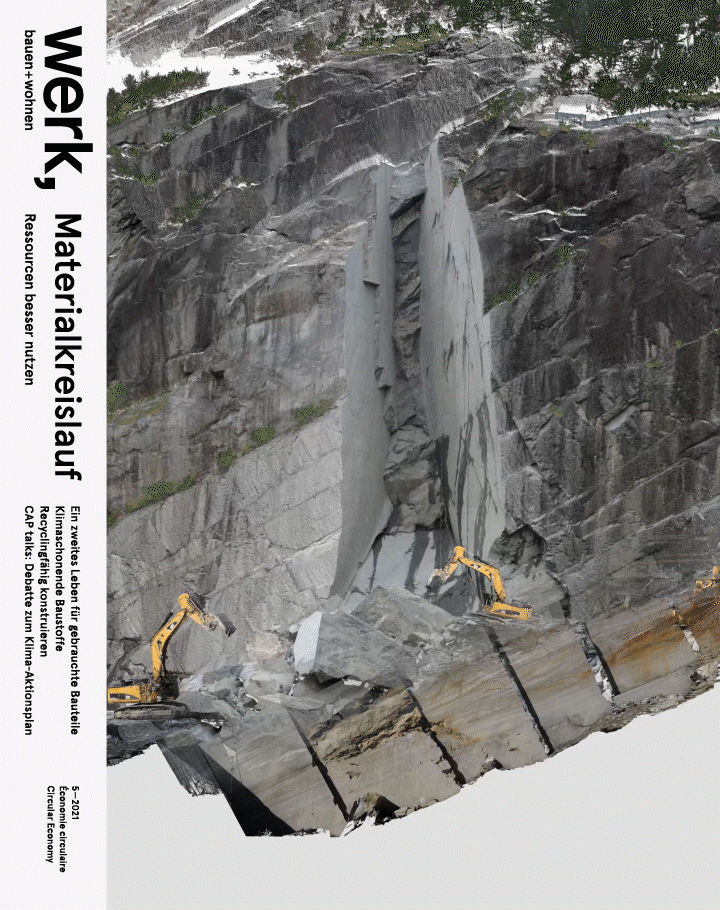werk, bauen + wohnen 5-2021

Acting Against Climate Change
We capitulate to the figures that illustrate climate change. Or, as Timothy Morton describes it in Being Ecological: data cause fear and insecurity, they do not lead to change but to shock paralysis or, worse still, to the impulse to disprove them. Conversely, this means that there is no way around the built experiment. On two accounts. Firstly, the abstract figures can only
be made visible through built architecture, only a building with net zero grey energy makes it clear how building against climate change can look. Secondly, faith in mastering the climate crisis lies less in our intentions than in the things that we do.
The greenest building is indeed the one that was not built in the first place, however it is not our aim to proclaim the end of the profession, but to show a constructive way out of the dilemma. Experiments provide data which we can interpret, and which show the need for new ways of acting. This means that now it is time, in the case of as many buildings as possible, to leave the path of the standards, the labels and of what is pleasing and to dare to do something unusual. And this calls for rethink-
ing and courage from all those involved: from clients and public authorities as well as from architects. The strategies of building in the face of climate change could hardly differ more from each other but we wish to emphasise one thing: in building today demolition and reuse tomorrow should always be included in the planning.
Despite the diversity of the paths outlined in this issue: in the climate crisis we resemble the rabbit in front of the snake. The gaze freezes in expectation of the inescapable. The imperative “avoid CO₂!” is restrictive, above all for architecture. With this issue we say to the rabbit: take a close look and do something! A good list of priorities is offered by the nine “Rs” of sustainability: refuse (not making use of raw materials), reduce (fewer raw materials), reuse (through employing used or separated products), repair (and maintain), refurbish (convert), remanufacture (make new products from parts of old ones), repurpose (change the use), recycle (reprocess material mechanically or chemically), recover (recover energy). If we take this series to heart, suddenly we again have air to breathe. — Jenny Keller, Tibor Joanelly